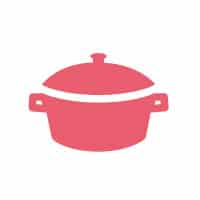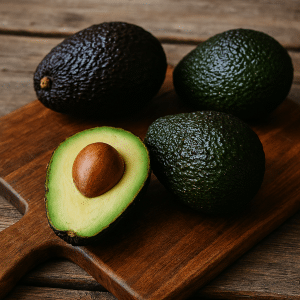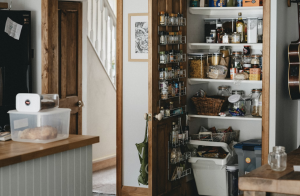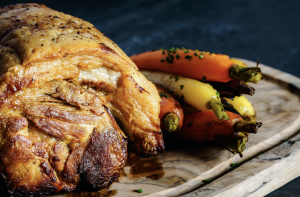Staring at a recipe filled with mysterious letters and symbols can feel overwhelming, especially when you want to create something delicious.
Understanding cup abbreviations and other recipe measurement abbreviations is essential for cooking success; mistakenly using “T” for “t” can turn your fluffy cake into a dense brick.
Whether you’re following grandma’s handwritten recipe cards or the latest cookbook, these tiny symbols hold the key to culinary success.
From basic cup measurements to more detailed cooking measurement conversions, knowing your kitchen shorthand prevents costly mistakes and ensures consistent results every time you cook or bake.
Let me walk you through the most common standard kitchen abbreviations so you can cook with confidence, knowing exactly what each symbol means and when to use different variations you might encounter.
The Standard Abbreviation for Cup
The standard abbreviation for cup is “c” (lowercase). You’ll also see “C” (uppercase) used frequently, and both are perfectly correct. Most modern cookbooks and recipe websites use the lowercase “c” as their standard.
Here’s what you need to know:
- “c” = cup (most common)
- “C” = cup (also widely accepted)
- “cp” = rarely used in modern recipes
You’ll find these abbreviations consistently used across popular cooking sites, such as Food Network and AllRecipes, as well as in bestselling cookbooks by authors like Julia Child and Ina Garten.
Common Kitchen Measurement Abbreviations

Mastering these essential abbreviations will transform your cooking experience from guesswork to precision. Keep this reference handy until these symbols become second nature; you’ll use them in nearly every recipe you follow.
Here’s your essential reference for standard kitchen abbreviations that every home cook should know:
| Measurement | Abbreviation | Alternative |
|---|---|---|
| Teaspoon | tsp | t |
| Tablespoon | Tbsp | T |
| Cup | c | C |
| Pint | pt | P |
| Quart | qt | Q |
| Gallon | gal | – |
| Ounce | oz | O |
| Pound | lb | lbs, # |
| Fluid ounce | fl oz | – |
| Square | sq | – |
| Minute | min | – |
| Hour | hr | – |
| Dozen | doz | – |
| Moderate | mod | – |
These cooking measurement conversions follow standardized rules that have been used in American kitchens for generations, making recipe-following much simpler once you learn the basics.
Measurement Equivalents: Cups and More

Think of measurement conversions as your kitchen’s universal language; once you speak it fluently, you can adapt any recipe to your needs.
These equivalents are like having a trusted cooking companion who always knows exactly how much of what you need.
Cup Conversions
Understanding these relationships helps you work more efficiently in the kitchen and ensures that your measurements stay accurate, regardless of the tools you have available.
| Measurement | Equivalent |
|---|---|
| 1 cup (c) | 16 tablespoons (T) |
| 1 cup (c) | 48 teaspoons (t) |
| 1 cup (c) | 8 fluid ounces (fl oz) |
| 1 cup (c) | 240 milliliters (ml) |
| 1 cup (c) | 1/2 pint (pt) |
Teaspoon to Tablespoon Conversions with Cups and Fluid Ounces

When you’re in the middle of cooking and need to convert between teaspoons and tablespoons, having a quick reference makes all the difference.
These conversions are particularly helpful when you’re doubling a recipe or when you can’t find the right measuring spoon.
| Teaspoons (tsp) | Tablespoons (Tbsp) | Cups | Fluid Ounces (oz) |
|---|---|---|---|
| 3 tsp | 1 Tbsp | 1/16 C | ½ oz |
| 6 tsp | 2 Tbsp | ⅛ C | 1 oz |
| 8 tsp | 2 Tbsp + 2 tsp | ⅙ C | 1 ⅓ oz |
| 12 tsp | 4 Tbsp | ¼ C | 2 oz |
| 16 tsp | 5 Tbsp + 1 tsp | ⅓ C | 2 ⅔ oz |
| 24 tsp | 8 Tbsp | ½ C | 4 oz |
| 32 tsp | 10 Tbsp + 2 tsp | ⅔ C | 5 ⅓ oz |
| 36 tsp | 12 Tbsp | ¾ C | 6 oz |
| 48 tsp | 16 Tbsp | 1 C | 8 oz |
Quick Reference:
- 1/4 c = 4 T = 12 t
- 1/3 c = 5 T + 1 t
- 1/2 c = 8 T = 24 t
- 3/4 c = 12 T = 36 t
These conversions are particularly helpful when you need to adjust serving sizes or when your measuring cups are in the dishwasher!
How to Read and Use Abbreviations in Recipes
Once you know the abbreviations, interpreting them correctly in context becomes your next step to cooking success. Reading recipe abbreviations becomes second nature with these simple guidelines:
General Rules:
- Lowercase letters typically indicate smaller measurements (t)
- Uppercase letters often represent larger measurements (T)
- When in doubt, context helps – “2 c flour” clearly means cups, not something else
Tips for Success:
- Always double-check unfamiliar abbreviations before starting
- Keep a conversion chart handy until you memorize the basics
- When following international recipes, note that metric measurements may use different abbreviations
For International Readers:
- US recipes use the imperial system (cups, ounces, pounds)
- Metric recipes typically spell out “ml” for milliliters and “g” for grams
- 1 US cup equals approximately 240ml (not the 250ml metric cup)
Mastering Measurements for Better Baking
Now you’re equipped with the knowledge to tackle any recipe with confidence. Remember, the standard cup abbreviations are “c” and “C”; both mean the same thing.
Keep this guide bookmarked for quick reference, and don’t hesitate to double-check measurements when trying new recipes.
Understanding these fundamental recipe measurement abbreviations will transform your cooking experience from stressful guesswork into enjoyable precision. Happy cooking, and remember, every expert baker started exactly where you are now!
Do you have questions about other cooking measurement conversions or kitchen abbreviations? Drop a comment below. I’d love to help clarify any confusing recipe symbols you encounter.
FAQs About Cup Abbreviations
Can “Cup” Be Abbreviated As “Cp”?
While “cp” is still used, it’s rarely seen in modern American recipes. Stick with “c” or “C” to avoid confusion.
How Is “Cup” Abbreviated In Metric Recipes?
Metric recipes typically don’t use cup measurements. Instead, they use “ml” (milliliters) or “l” (liters) for liquid measurements.
Why Do Some Recipes Use Both “C” And “C”?
This usually depends on the publisher’s style guide. Some use lowercase for all measurements, while others capitalize certain abbreviations to emphasize them.













